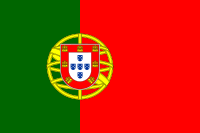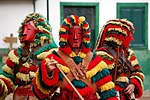
The United Nations Educational, Scientific and Cultural Organisation (UNESCO) intangible cultural heritage elements are the non-physical traditions and practices performed by a people. As part of a country's cultural heritage, they include celebrations, festivals, performances, oral traditions, music, and the making of handicrafts. [1] The "intangible cultural heritage" is defined by the Convention for the Safeguarding of Intangible Cultural Heritage, drafted in 2003 [2] and took effect in 2006. [3] Inscription of new heritage elements on the UNESCO Intangible Cultural Heritage Lists is determined by the Intergovernmental Committee for the Safeguarding of Intangible Cultural Heritage, an organisation established by the convention. [4]
Contents
- Intangible Cultural Heritage elements
- Representative List
- Good Safeguarding Practices
- Elements in Need of Urgent Safeguarding
- See also
- Notes
- References
- External links
Portugal ratified the convention on 21 May 2008. [5] It registered its first element on the representative list in 2011.










